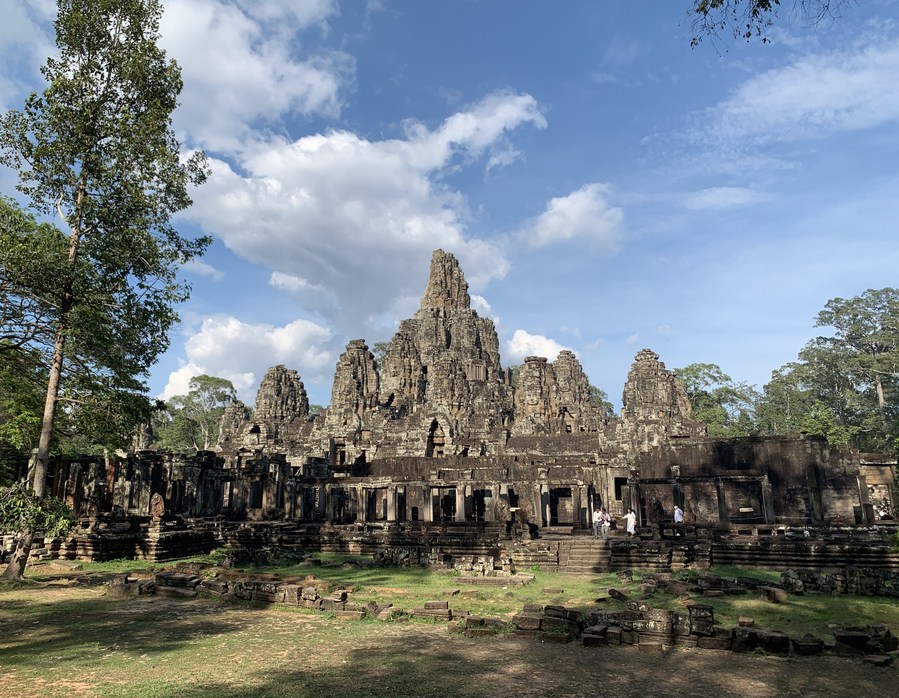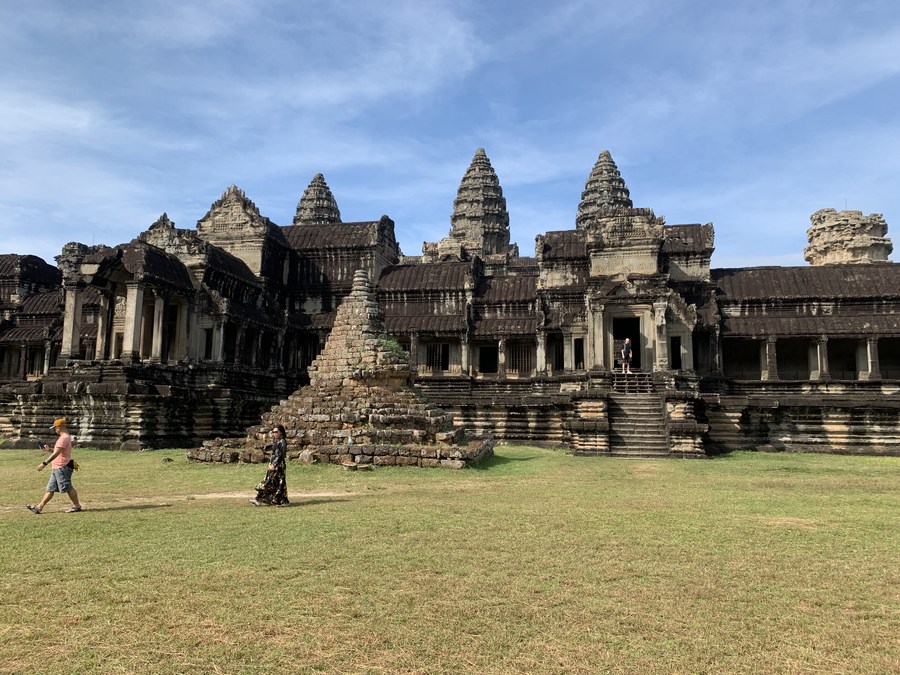China's reopening to revitalize Cambodia's economy, tourism: PM

Photo taken on April 5, 2022, shows the Bayon Temple in the Angkor Archeological Park in Siem Reap province, Cambodia.(Photo by Van Pov/Xinhua)
Chinese tourists are welcomed by Cambodia and other countries as the world's second-largest economy planned to reopen its borders from Jan. 8.
KRATIE, Cambodia, Jan. 3 (Xinhua) -- Cambodian Prime Minister Samdech Techo Hun Sen said here on Monday that China's upcoming reopening of its borders will revitalize the kingdom's economy and tourism.
Hun Sen said Cambodia and other countries alike are looking forwards to welcoming Chinese tourists after the world's second-largest economy planned to reopen its borders from Jan. 8.
"Cambodia is one of the most popular tourist destinations for Chinese tourists," he said during a groundbreaking ceremony for the construction of a China-funded river bridge.
He added that the Southeast Asian nation is very pleased to welcome the return of Chinese tourists, saying that their presence is vital to the country's tourism and economic growth.
"When China reopens its borders, flights will increase many times, so we hope to welcome about 2 million Chinese tourists again (in 2023)," Hun Sen said.

Tourists visit the Angkor Wat in the Angkor Archaeological Park in Siem Reap province, Cambodia, Dec. 17, 2022. (Photo by Van Pov/Xinhua)
According to the Cambodian leader, prior to the COVID-19 pandemic, Cambodia received 2.36 million Chinese tourists in 2019.
Tourism is one of the four major pillars supporting Cambodia's economy. In the pre-pandemic era, the country registered 6.6 million international tourists in 2019, generating 4.92 billion U.S. dollars in revenue that contributed 12.1 percent to its GDP.
Cambodia is famous for its three world heritage sites, namely the Angkor Archaeological Park in Siem Reap province, the Preah Vihear Temple in Preah Vihear province, and the Sambor Prei Kuk Archaeological Site in Kampong Thom province.
Besides, it has a 450-km pristine coastline stretching across four southwestern provinces.


